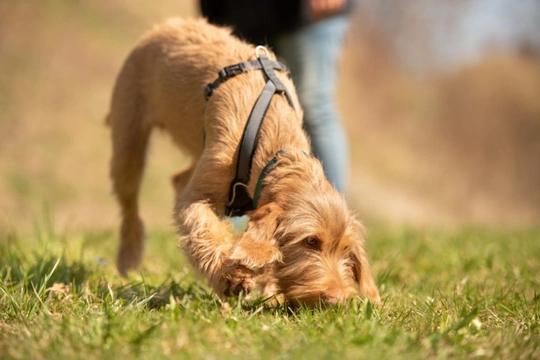
Can dogs detect COVID-19?
COVID-19 and coronavirus are of course words making it into virtually every conversation at the moment, and discussion of social distancing restrictions, pressure on the NHS, wellness, and avoiding spreading coronavirus to the most vulnerable members of society are all hot topics.
Other areas of discussion on the subject naturally relate to how COVID-19 can be detected, when tests will be rolled out to the general public, if you can develop immunity to COVID-19 if you’ve recovered from it; and when there might be a workable vaccine or cure.
Testing for COVID-19 both in the UK and elsewhere is something that isn’t happening as quickly as it could be, and being able to test and identify people with or carrying COVID-19 would really help to slow the spread of the condition. However, we’re still a long way away from a large-scale testing roll-out or antibody testing to identify people who have already had COVID-19; but could dogs help with this?
“Can dogs detect COVID-19?” might seem like a bit of a whacky question, but it is not as crazy as it sounds; after all, we already know that dogs have an incredibly acute sense of smell that can actually be used to detect cancer, and that dogs can also be trained to detect other health conditions like diabetes, and even when a woman is fertile!
So, can dogs detect COVID-19, and is training dogs to be able to detect COVID-19 in people something that researchers are looking into, and why? Read on to find out the answers.
Can dogs detect illness?
Dogs can detect quite a number of different illnesses that we know of and quite possibly any number of others that we don’t know about, and they do this largely by smell. A dog’s sense of smell is far more acute than our own in more or less every way; not only can they detect more smells than we can but they can identify them, recall them and match them to memories with a far greater capacity than us, and they need far fewer scent particles to work with than us when it comes to recognising and sniffing things out too.
Dogs may also be able to detect other things that can indicate specific illnesses and health conditions, such as minute changes in body temperature; but it is largely the chemical changes in the body that illnesses or anomalies cause that dogs sniff out. This applies to both conditions like cancer that is consistently present in an affected individual; and for people with conditions like diabetes or epilepsy in which fluctuations can indicate the onset of a blood/sugar imbalance or seizure, these minute changes are what the dog’s sense of smell picks up on.
Do dogs have to be trained to sniff out health conditions or is this an innate ability?
Dogs can identify and recognise the scents and scent changes that indicate all manner of health issues and illnesses and other things besides; right down to what sort of meal we ate last! They don’t need to be trained to work their noses or have their sense of smell fine-tuned; this ability is innate to dogs.
What dogs do have to be trained in is recognising the specific scent that is important for the purpose in question – for instance, the scent that indicates a blood/sugar imbalance for diabetics – assigning meaning to it, and alerting their handler or owner.
Who trains dogs to detect illness?
To train a dog to detect the markers of an illness or health condition requires quite a lot of different elements to come together. This includes dogs that have an acute sense of smell and that are receptive to training and intuitive to work with and of course, access to the scent in question you want them to pick up on to use as a baseline to build their recognition.
This means people who train dogs to detect illness need access to samples, which might be deactivated viral loads, tissue, people known to have the appropriate markers, or a whole range of other things. In the UK, registered charity and company Medical Detection Dogs is generally the body that trains medical alert dogs and bio detection dogs.
Could dogs be used to diagnose people with COVID-19?
Theoretically yes, and Medical Detection Dogs is already beginning to explore this possibility. They recently announced that they’re just about to begin intensively working with six dogs in a trial to train them to detect COVID-19, in cooperation with the London School of Hygiene and Tropical Medicine, and Durham University.
However, it is still likely to be six to eight weeks from start to finish at an optimistic estimate before the success of the training programme can be determined, and the six dogs to be used need to pass an assessment process first, and so even if successful, all of this won’t happen overnight.
Why would COVID-19 detection dogs be useful?
The main application of COVID-19 detection dogs if dogs can indeed be successfully trained for this would be to screen people entering the UK’s ports and airports for the markers of COVID-19, just as dogs are already used at ports to sniff out contraband!
It could also help to speed up testing and prioritise testing for COVID-19 in the UK population in general; whilst people that the dogs flag as infected then need to be formally tested and dog detection alone is never used as a definitive diagnosis of illness, a dog can cover a large number of people quickly and identify people that need to be tested to confirm their status.
Additionally, when the dogs work with people they don’t need to physically touch those they’re sniffing, which means no direct contact with potentially infected people and a greatly reduced risk of passing the virus onto others as a carrier than might be the case with other methods!



